Refractive Error
Last updated July 24, 2025
Medical information on this page is for educational purposes only and is not a substitute for professional medical advice, diagnosis or treatment.
See our Terms & Conditions and Consent for Telemedicine for details.
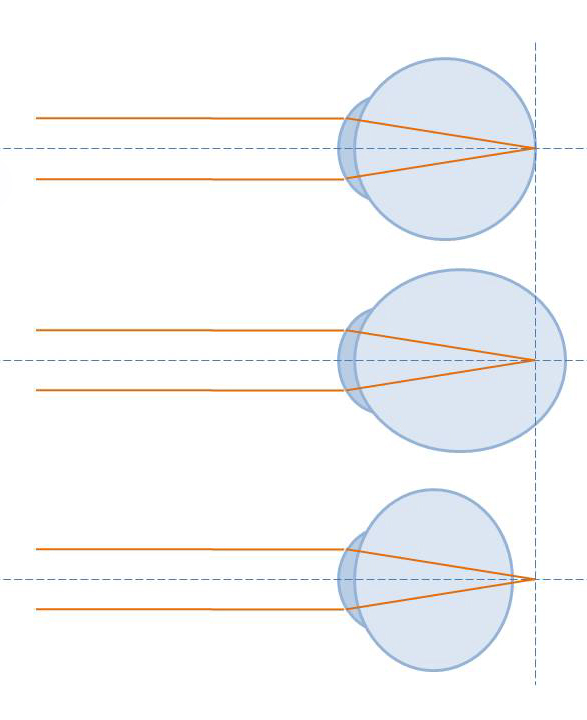
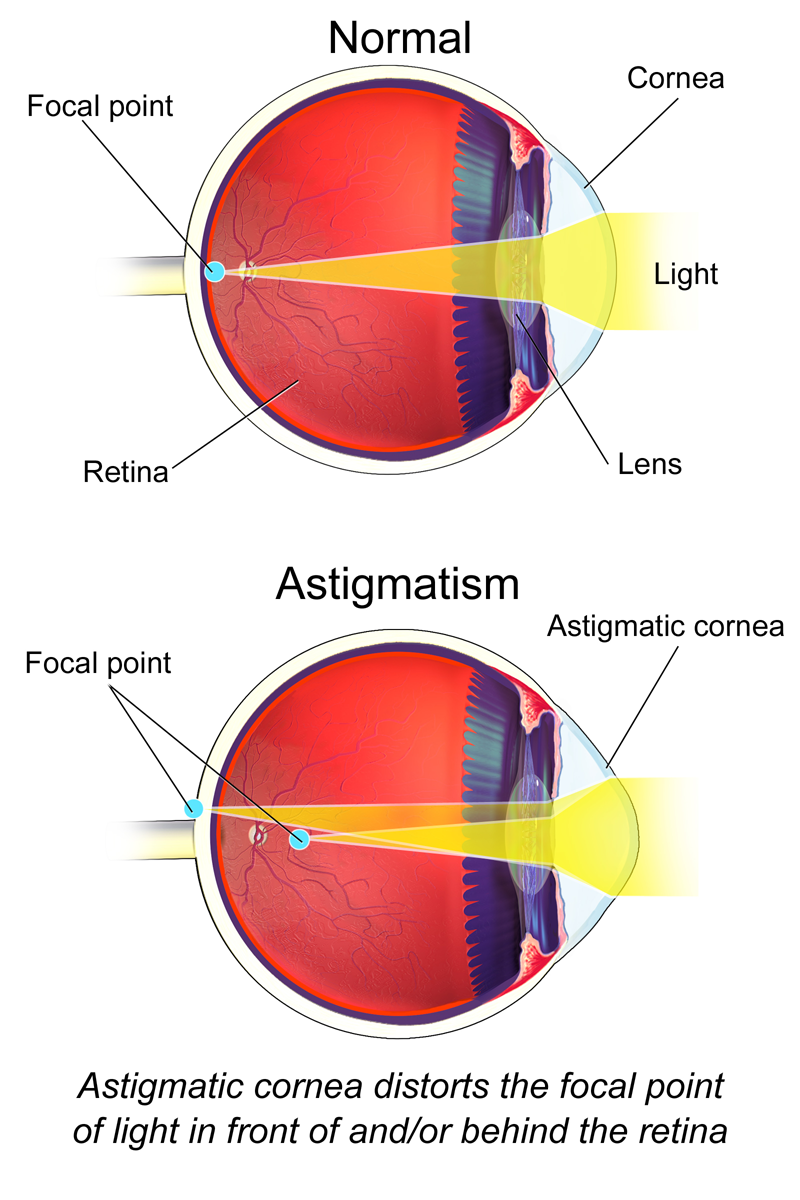
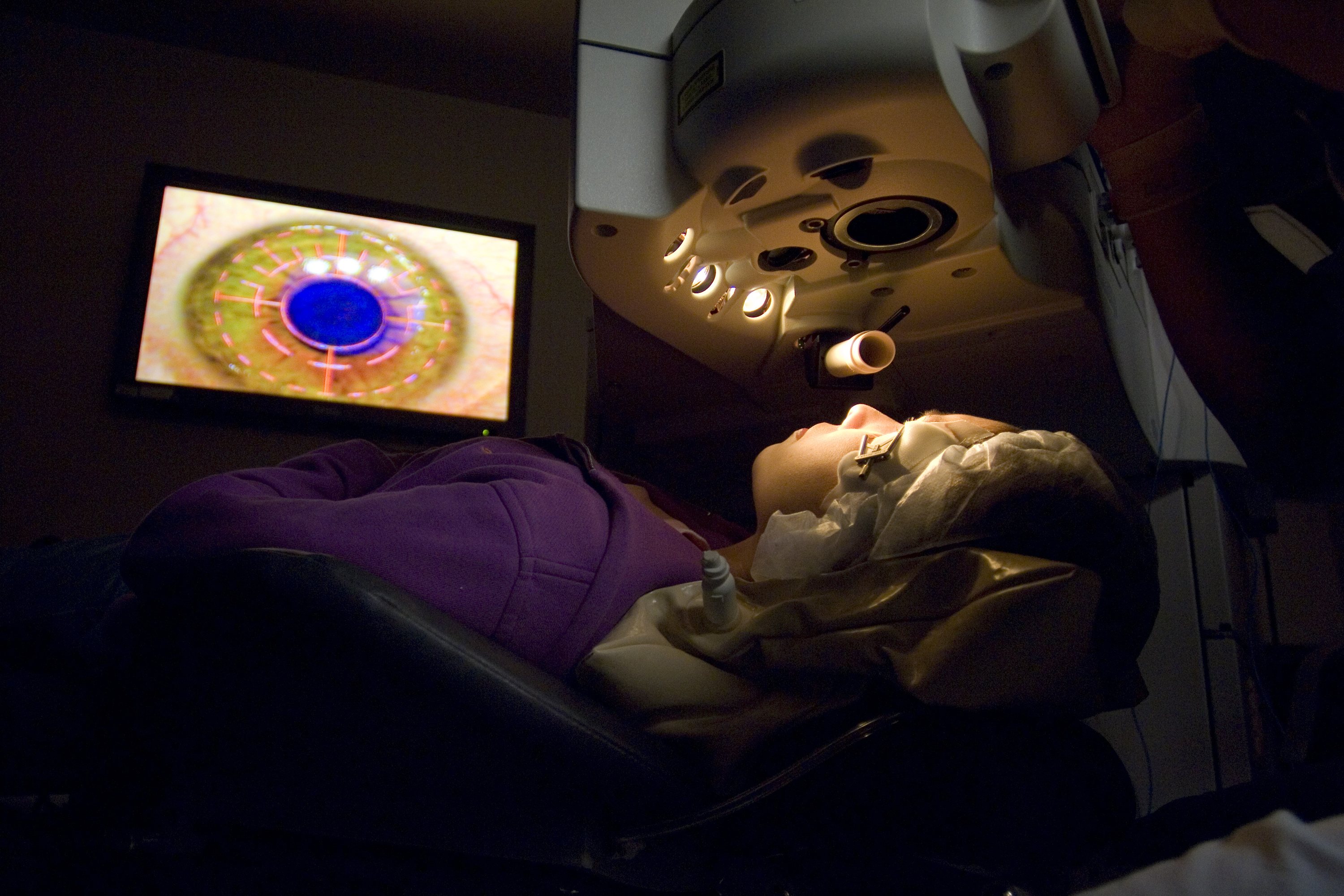
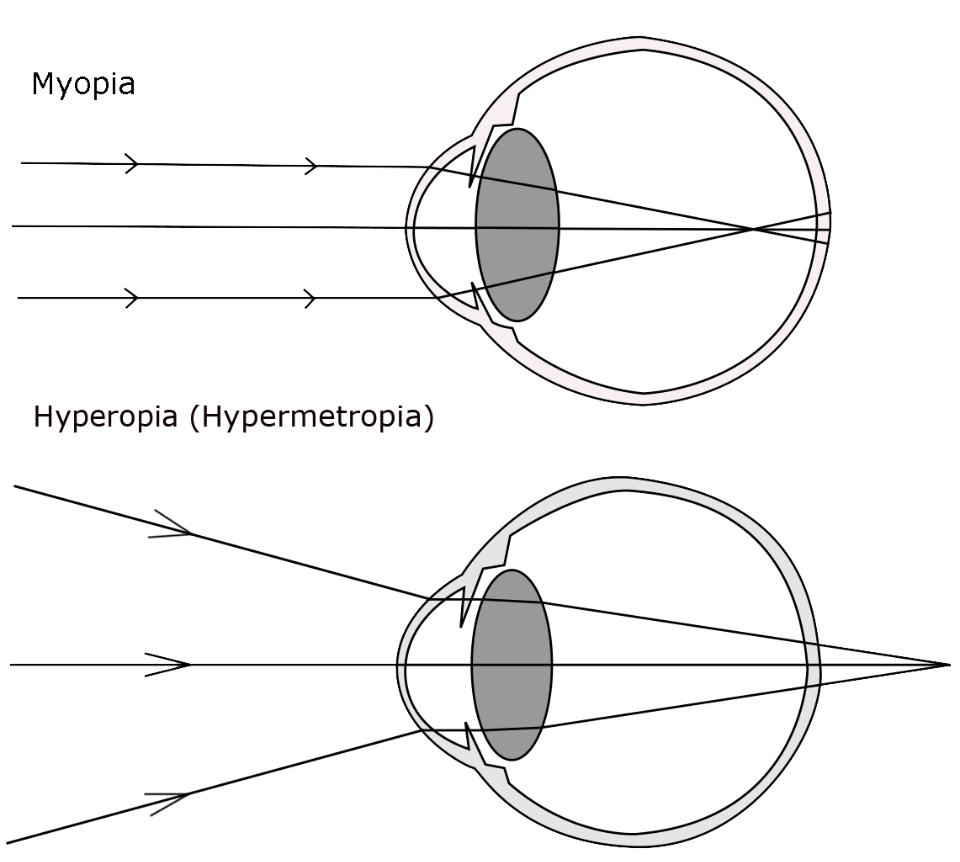
Overview
Refractive errors are the world’s most common vision problem, affecting more than 150 million people in the United States alone.1 They occur when the eye’s shape prevents incoming light from focusing precisely on the retina, resulting in blurred or distorted sight. The four main types are myopia (nearsightedness), hyperopia (farsightedness), astigmatism (distorted vision at all distances) and presbyopia (age-related close-up blur).2 Fortunately, most refractive errors can be corrected quickly and safely with glasses, contact lenses or surgery, restoring clear, comfortable vision.
Symptoms
The hallmark symptom is blurred vision. Depending on the error, you may notice:
- Difficulty seeing far away (myopia) or up close (hyperopia/presbyopia)
- Bending letters or ghost images (astigmatism)
- Headaches, eye strain or squinting—especially after reading or screen use3
- Halos or glare around lights at night4
Symptoms often develop gradually, so regular eye exams remain essential—even if you feel you see “well enough.”
Causes and Risk Factors
Light must bend (refract) perfectly through the cornea and lens to reach the retina. Any mismatch in eye length, corneal curvature or lens flexibility shifts the focal point, producing blur.5 Key risk factors include:
- Genetics — having one nearsighted parent doubles a child’s risk; two parents triples it.6
- Prolonged near work (reading, screens) and limited outdoor time, especially in children.7
- Aging — lens stiffening causes presbyopia, typically after age 40.
- Certain conditions (diabetes, keratoconus) or medications (steroids) that alter corneal shape.
Personal Refractive Error Risk Estimator
Enter your details in the following fields to calculate your risk
Risk Level
Recommendation
Diagnosis
Eye-care professionals detect refractive errors during a comprehensive dilated eye exam. Tests include:
- Visual acuity chart (20/20 lines)
- Refraction test using a phoropter to fine-tune lens power
- Retinoscopy/autorefraction for objective measurement
- Keratometry/topography to map corneal curvature when astigmatism is suspected41
These painless tests take 15–30 minutes and provide an exact eyeglass or contact-lens prescription.
Treatment and Management
Eyeglasses remain the safest, simplest fix, instantly bending light onto the retina.8 Contact lenses offer a wider field of view and are ideal for sport or occupational needs. Specialty rigid-gas-permeable or toric lenses correct higher astigmatism.
When patients prefer independence from lenses, several surgical options reshape the cornea:
- LASIK / SMILE / PRK — laser sculpts the cornea to eliminate glasses
- LASEK/Epi-LASIK for thinner corneas
- Phakic IOLs implant a micro-lens inside the eye
- Conductive keratoplasty or corneal inlays for presbyopia
Surgery candidacy depends on corneal thickness, prescription stability and overall eye health.6 Your surgeon will explain risks such as dry eye, glare and rare flap complications.
Living with Refractive Error and Prevention
Most people lead full, active lives with corrective lenses. To keep eyes comfortable:
- Follow the 20-20-20 rule: every 20 minutes, look 20 feet away for 20 seconds.
- Encourage children to play outdoors ≥2 hours daily—shown to lower myopia onset by up to 60 percent.7
- Wear protective eyewear for sports and UV-blocking sunglasses outdoors.
- Schedule eye exams at least every two years (annually for kids or if you already wear correction).4
Emerging “myopia-control” strategies—low-dose atropine drops, special dual-focus contact lenses and orthokeratology—may slow prescription changes in children.
Latest Research & Developments
Researchers are racing to curb the global myopia surge. At a 2024 NEI-sponsored summit, experts highlighted that two hours of bright outdoor light daily can reduce new myopia cases by nearly two-thirds.7
Other breakthroughs include:
- Low-dose atropine (0.01 %) eye drops that slow axial eye growth with minimal side-effects.
- Next-generation corneal cross-linking to stabilise progressive keratoconus-related astigmatism.
- Wavefront-guided LASIK delivering sharper night vision.
- NEI data-science projects mapping refractive-error prevalence to target early-intervention programs.9
Gene-editing and customised “smart” contact lenses remain experimental but show promise for future personalised vision correction.
Recently Published in Peer-Reviewed Journals
BMC ophthalmology
July 22, 2025
Prevalence and patterns of subnormal visual acuity and refractive errors among preschool children in Sucheng district: a cross-sectional study.
Shen L, Cui Y, Zhao N, et al.
BMC ophthalmology
July 21, 2025
Effect of intraoperative mitomycin C application at different concentrations on corneal densitometry after SmartSurf(ACE) transepithelial photorefractive keratectomy.
Yu T, Yan C, Wang H, et al.
American journal of ophthalmology
July 19, 2025
Myopic shift accelerates at refractive diopter below +1.0 in children aged 6 to 9 years old.
Chen J, Qi Z, Zhang X, et al.
Next Steps
If you suspect a refractive error—or your current glasses no longer feel right—book a comprehensive exam with an optometrist for evaluation. Complex cases (very high prescriptions, irregular corneas) may be referred to a corneal & refractive surgeon (an ophthalmologist subspecialised in refractive surgery) for advanced testing and potential laser or lens-based correction.18
You can connect directly with our board-certified specialists below to discuss tailored options, confirm candidacy and schedule surgery or lens fittings at your convenience.
Trusted Providers for Refractive Error

Dr. Connie Wu
Specialty
Glaucoma
Education
The Warren Alpert Medical School of Brown University

Dr. Dane Slentz
Specialty
Oculoplastics
Education
Oculoplastics
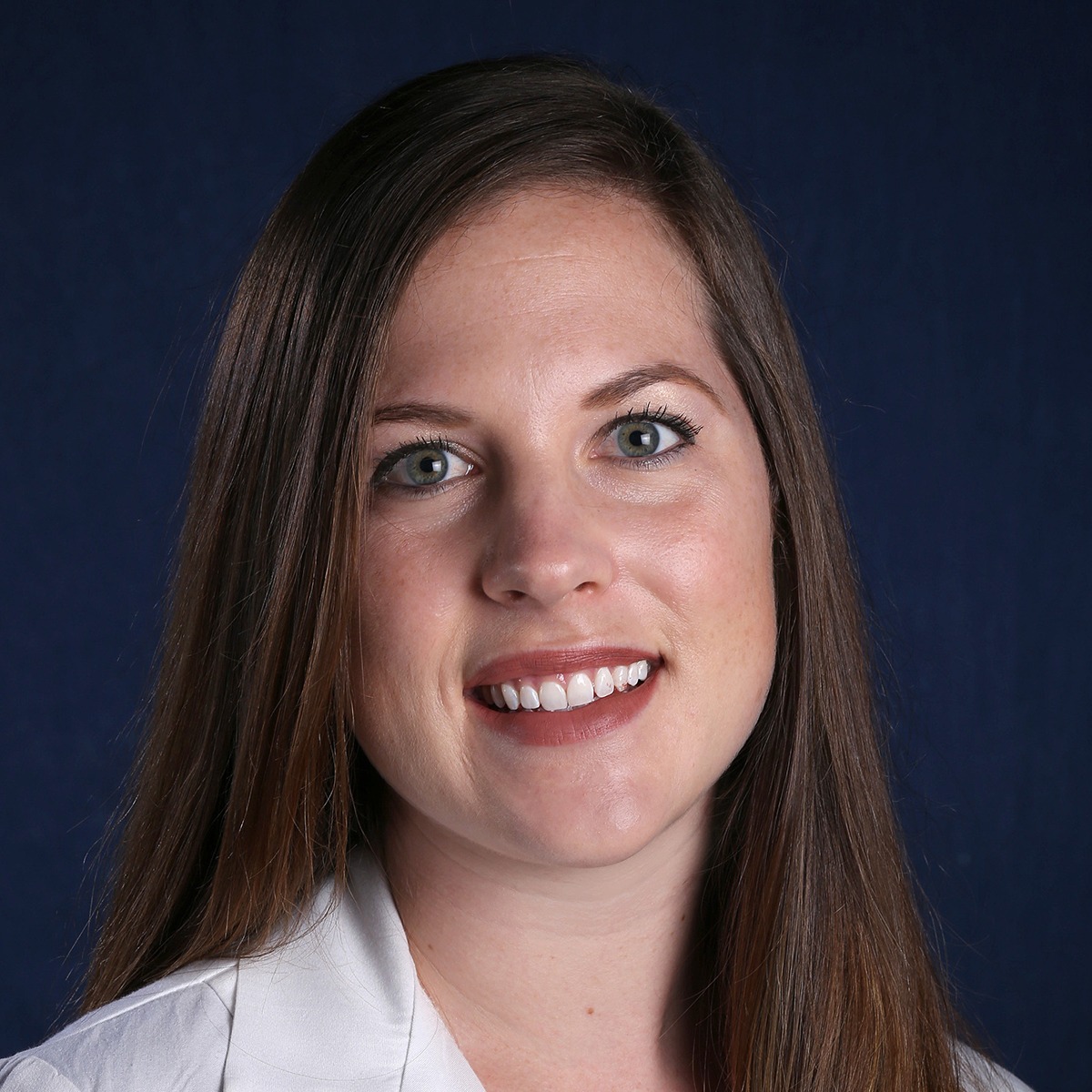
Dr. Emily Eton
Specialty
Retina/Vitreous
Education
Harvard Medical School

Dr. Emily Schehlein
Specialty
Glaucoma
Education
Glaucoma

Dr. Grayson Armstrong
Specialty
Retina/Vitreous
Education
Ophthalmology

Dr. Jose Davila
Specialty
Retina/Vitreous
Education
Retina/Vitreous Surgery

Dr. Karen Chen
Specialty
Glaucoma
Education
Glaucoma

Dr. Levi Kanu
Specialty
Cornea and External Disease
Education
Cornea and External Disease

Dr. Nicholas Carducci
Specialty
Retina/Vitreous
Education
University of Pennsylvania Perelman School of Medicine